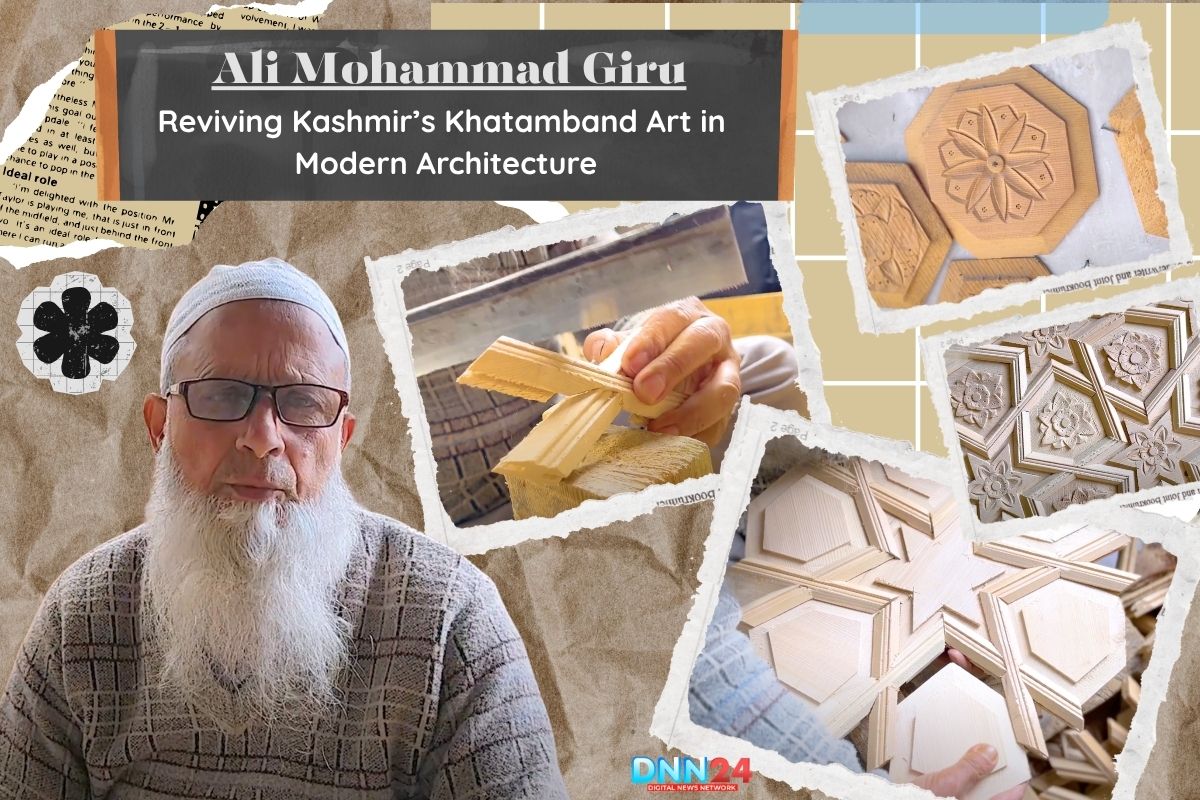Kashmir is not just beautiful; it’s also rich in art. It has many treasures but one of them is the special unique art of Kashmir known as Khatamband. It’s all about traditional architecture. Ali Mohammad Giru, the artist breathing new life into Kashmir’s majestic Khatamband. His imagination is a masterpiece of combining this ancient wooden ceiling art with the modern architectural wonders. Think of magnificent structures with amazing craft works and roofs painted beautifully. Be it palaces, temples, mosques, or houses, Khatamband gives an additional touch of beauty.
This ancient craft represents the legacy of Kashmir’s traditional architecture. The beautiful carvings and picturesque designs on the ceilings have been the trademark of buildings here since many centuries. Whether it is royal palaces or simple households, holy temples or sacred mosques, this art form has always enhanced beauty of the buildings. The intricate wooden ceiling work speaks volumes about the skilled artisans who have preserved this tradition through generations, making it an integral part of Kashmir’s cultural identity.
Ali Mohammad Giru: The Master Craftsman’s Journey
Ali Mohammad Giru represents the living embodiment of this traditional art form. His workshop is a witness to the preservation of ancient skills which are transmitted through generations. Ali being a good craftsman has been producing Khatamband work in his own style over decades. His journey began in 1968 when he completed his matriculation and immediately joined his family’s traditional workshop.
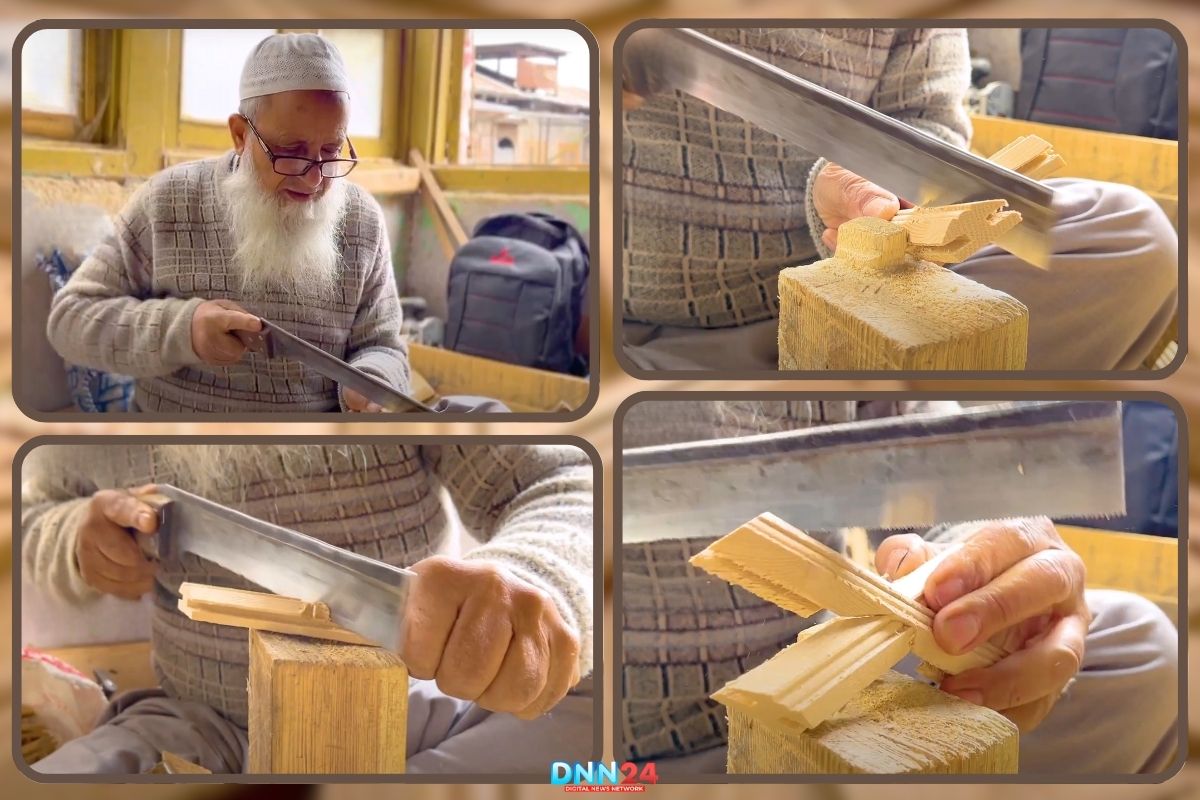
“This work is our family business,” explains Ali Mohammad. “My entire family has been doing this Khatamband work. My grandfather did this work, and his grandfather before him – we are all doing this ancestral work.” His teachers were his father and his elder brother Abdul Nazar and out of the six brothers, four of them still perform this art. This family tradition showcases how traditional crafts are preserved and transmitted through generations, ensuring the continuity of Kashmir’s artistic heritage.
The Traditional Methods and the Historical Foundations
Khatamband wooden ceiling work is centuries old art. It is said that this unique design of ceilings was introduced in Kashmir in 1541 by Mirza Haidar Tughlaq who had brought it with him during the Mughal rule. The method implies positioning of wood into geometrical structures without glue or nails, which makes it a marvel of traditional engineering and craftsmanship.
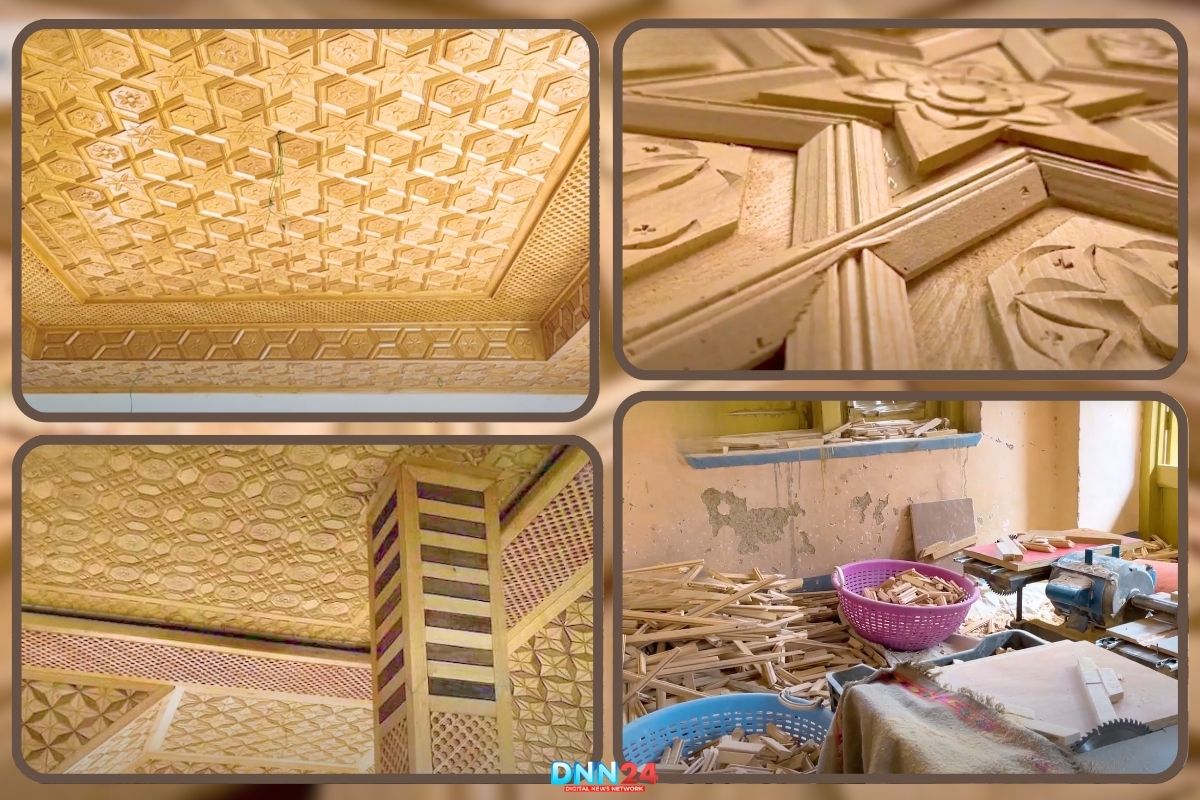
The accurateness of this art form is phenomenal. As Ali explains, “These designs are geometric. If there’s even a slight difference in measurement, the pattern won’t align properly.” Different designs are separately scaled and with particular cutting patterns. The craftsmen use traditional tools called ‘kanat’ with marked lines that indicate different measurements for various patterns like ‘char bish’ (four-piece) and ‘teen bish’ (three-piece). This mathematical accuracy allows the patterns to be continued indefinitely up to 100 feet but any error in cutting or joining will stop the design in its track.
Contemporary Relevance and Present-day Applications
Khatamband art has been reborn today as a modern interior design and architecture. Ali Mohammad’s workshop has executed projects in various contemporary settings including cafeterias, rest houses, and modern homes. This old art can fit in the modern architecture style yet still preserve its originality.
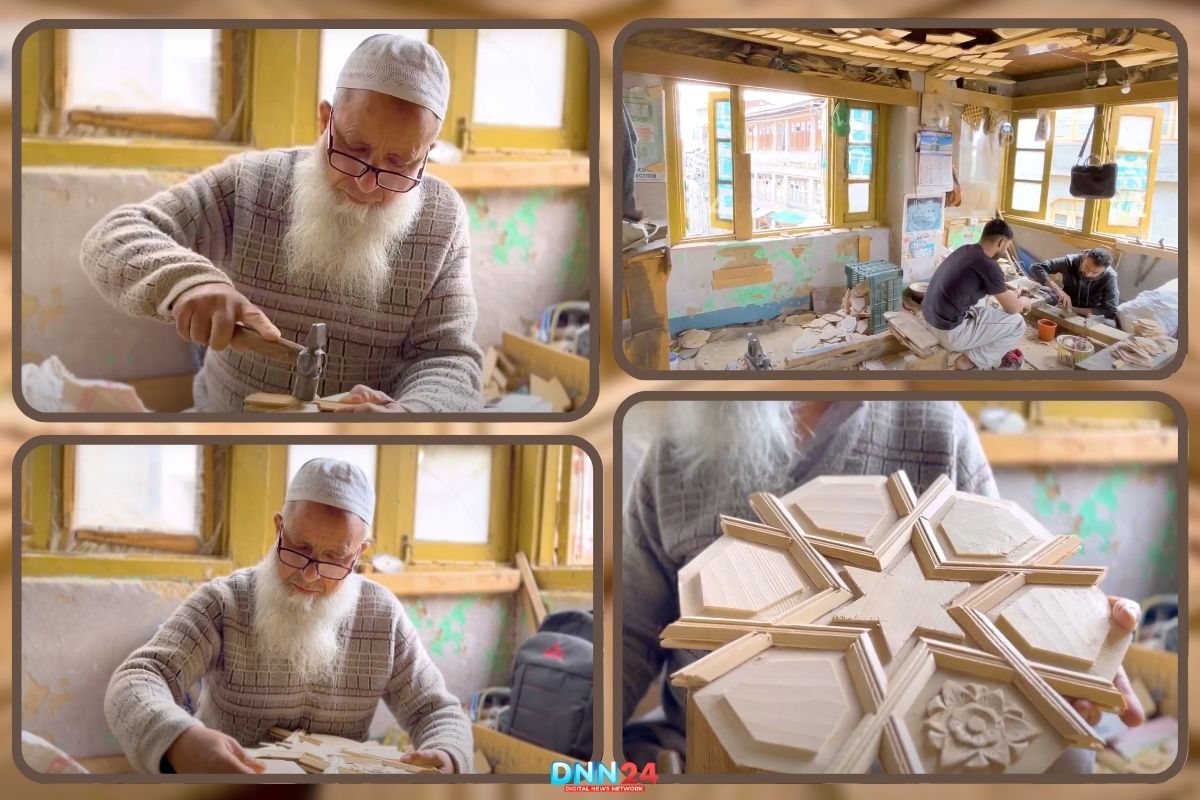
The usefulness of wooden ceilings is still applicable today. Such ceilings are naturally insulated and they retain warmth in winters and coolness in summers. In Kashmir, craftsmen primarily use ‘budhal’ wood for local projects due to its soft texture and workability. They like deodar wood that is stronger and more durable in case of international projects. Its ability to use luxurious woods such as walnut makes the designs functional and at the same time appealing to look at, thus suitable in luxury modern interiors.
Saving Heritage for the Digital Age
The trade has adopted contemporary ways of authentication without forgoing the olden techniques. Ali Mohammad mentions that Khatamband work has been registered and received Geographical Indication (GI) status. Genuine works are now fitted with QR codes, indicating where they were produced, and by whom. This online fusion assists the consumers in authenticating the products as well as giving the real artisans a platform.
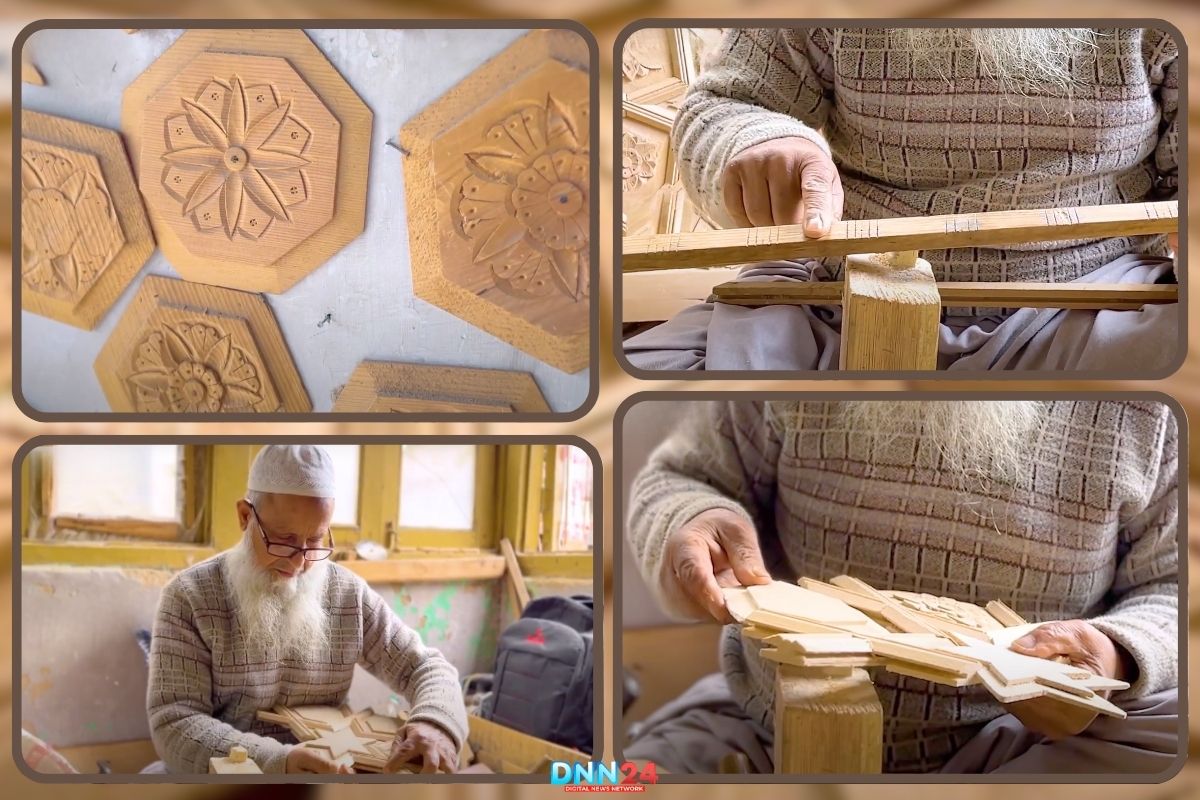
Other Kashmir crafts that fall under the GI registration are wood carving, walnut wood carving, Kani shawls, Pashmina, Sozni embroidery, papier-mache, saffron and carpets. This identification does not only safeguard the integrity of such crafts but also gives economic stability to traditional craftsmen. The combination of the traditional crafts and the modern certification system proves how the heritage arts can be adopted to the modern market needs and still retain their basic nature and quality.
Also Read: Tawheeda Akhtar: Weaving Hope and Empowerment Through Shining Star Boutique
You can connect with DNN24 on Facebook, Twitter, and Instagram and subscribe to our YouTube channel.

